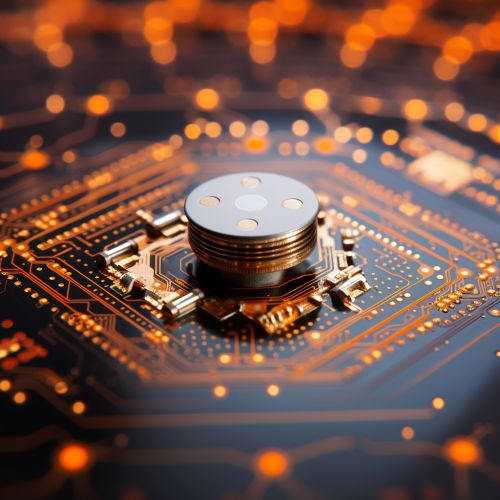Nanosensors
Introduction
Nanosensors are nanoscale devices that measure physical quantities and convert these into signals that can be detected and analyzed. They have a wide range of applications in various fields such as healthcare, environmental monitoring, and industrial process control. The development and application of nanosensors represent a significant aspect of nanotechnology, which involves the manipulation of matter on an atomic, molecular, and supramolecular scale.


Nanosensor Design and Operation
Nanosensors operate based on the unique properties of nanomaterials and nanostructures. They typically consist of a sensing element, transducer, and signal processing unit. The sensing element interacts with the target analyte, causing a change in the physical or chemical properties of the nanomaterial. This change is then converted into a measurable signal by the transducer. The signal processing unit interprets this signal and provides a readout.
A variety of nanomaterials, including nanoparticles, nanotubes, quantum dots, and nanowires, are used in the design of nanosensors. The choice of nanomaterial depends on the specific application of the nanosensor. For instance, carbon nanotubes are often used in gas sensors due to their high surface area and sensitivity to changes in their electronic properties.
Applications of Nanosensors
Nanosensors have a wide range of applications due to their high sensitivity, small size, and ability to operate at the nanoscale.
Healthcare
In healthcare, nanosensors are used for early detection of diseases, monitoring of drug delivery, and personalized medicine. For example, nanosensors can detect biomarkers for diseases such as cancer at very early stages, improving the prognosis and treatment outcomes. They can also monitor the delivery of drugs at the cellular level, ensuring that the drugs reach their intended targets.
Environmental Monitoring
Nanosensors are used in environmental monitoring to detect pollutants and other harmful substances. They can detect these substances at very low concentrations, allowing for early intervention and prevention of environmental damage. For example, nanosensors can be used to detect heavy metals in water, air pollutants, and greenhouse gases.
Industrial Process Control
In industrial process control, nanosensors are used to monitor and control processes at the nanoscale. They can detect changes in temperature, pressure, and chemical composition, allowing for precise control of industrial processes. This can improve the efficiency and quality of industrial products.
Future of Nanosensors
The future of nanosensors looks promising, with ongoing research and development aimed at improving their sensitivity, selectivity, and stability. There is also a growing interest in the development of wireless nanosensors and the integration of nanosensors into wearable devices and the Internet of Things (IoT).
However, there are also challenges that need to be addressed, including issues related to the fabrication, calibration, and standardization of nanosensors. There are also concerns about the potential environmental and health impacts of nanosensors, which need to be thoroughly investigated and addressed.
